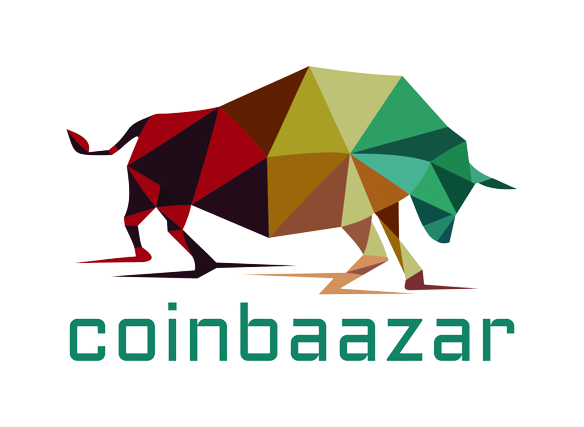It can be challenging for an investor to obtain opulent rates on conventional banking products like savings accounts. Thank goodness, low-risk investment solutions are now being offered by the established cryptocurrency market. Stable coins, which are blockchain-based tokens having a price tied to fiat currencies, are used in many of these products (usually the US dollar).
Describing the USDT.
Tether Limited, a business established in 2014, is the provider of the stable coin cryptocurrency known as USDT. The price of USDT is 1:1 correlated to the US dollar. It is a hosted ERC-20 token on the Ethereum blockchain.
Tether asserts that reserves made up of US dollars, cash equivalents, other short-term deposits, and commercial paper completely back USDT. The most recent attestation report from MHA Cayman, which attests to the complete backing of USDT tokens, was made public.
At the time of writing, USDT ranks among the top 3 largest crypto currencies as of the time of writing, with a market valuation that surpasses $72 billion. In the cryptocurrency business, stable coin has been crucial in bridging the divide between blockchain and conventional banking.
What causes such high USDT yields?
Why are USDT rates greater even with DeFi protocols while the yield offered by conventional savings accounts is around 1%? Given that USDT’s price is linked to the US dollar, which makes the volatility risk zero, this is a reasonable question.
Thanks to a novel business model where users lend cryptocurrency to borrowers ready to pay higher rates, companies like Nexo, BlockFi, and others may provide rates that are far greater. Since traditional banks cannot accept cryptocurrency as collateral, the latter group is prepared to do so. So, the rising demand for loans with cryptocurrency as collateral is driving up the interest rates.
USDT: Lending vs. Staking
Investors can earn money from their cryptocurrency holdings without selling them by staking or lending. In the current environment of low-interest rates, traditional savings accounts are unable to produce a sizable yield. Thankfully, investors can substitute staking and lending with stable coins like USDT.
The main difference between staking and lending is that in staking, users give their USDT to a blockchain or cryptocurrency platform in exchange for benefits, while in lending, they give their USDT to borrowers in order to earn interest.
Platforms for USDT Lending
Centralized lending platforms are the best option if you want to produce large profits while lowering your risk of volatility. They function in a manner comparable to conventional banks or internet lending services. Before they will let you open an account, you will have to pass a KYC (know your customer) verification process.
Three of the most reliable loan platforms that accept USDT and offer high yields were chosen:
Blockfi
Blockfi, One of the most used lending systems is BlockFi, which has been around for five years. The BlockFi Interest Account (BIA), one of its key offerings, allows customers to earn interest on their cryptocurrency. Every month, interest is paid and it accrues daily. Because BlockFi has no minimum balance requirement, many newcomers prefer it.
The annual percentage yield (APY) on USDT deposits can reach 7.25%. In fact, the following is how BlokFi’s Interest Tiers affect the fixed interest, which is changed frequently as mentioned below:
- Tier 1- Deposits of less than 20,000 USDT earn an APY of 7.25%.
- Tier 2- An APY of 6% is offered on USDT deposits of between 20,000 and 5 million USDT.
- Tier 3- USDT deposits worth more than $5 million provide a 4.5% annual percentage yield.
High net worth individuals (HNWIs) can earn unique rates by negotiating these with BlockFi, which offers a separate, personalised yield product. The typical loan term is between one and six months.
BlockFi lets you withdraw USDT for free once a month, but you have to pay for any other withdrawals.
Nexo
Nexo, established in 2017, is another well-known cryptocurrency loan site. The site now offers a 10% APY on deposits made in USDT. You will receive a greater APY if you select NEXO token rewards, the platform’s native token. These interest rates are by far some of the highest on the market right now. We particularly appreciate Nexo’s user-friendly UI, which can be helpful for newcomers.
Because of its flexible earning opportunities and compound daily rewards, institutional and retail investors favour Nexo. Additionally, Ledger and BitGo have an insurance policy worth $375 million that covers deposits.
When you use the NEXO token, you get better interest rates, freer cryptocurrency withdrawals, and other benefits.
Lending Platform Advantages and Disadvantages
Pros:
High yields–crypto lending platforms provide the highest yield on USDT deposits.
Low fees-the majority of cryptocurrency lending platforms levy low fees. For instance, Celsius asserts that there are no fees at all.
Cons:
Since these systems are centralized, you will need to transfer custody of your USDT funds (private keys).
Lending in USDT on Exchanges
With centralised crypto exchanges and services, you can even earn interest on USDT loans. Usually, they do this by lending money to traders who use margin. Typically, you’ll need to lock your USDT for a specific amount of time. Here are a few reputable cryptocurrency exchanges that accept lending in USDT:
Binance
By trading volume, Binance is by far the biggest cryptocurrency exchange. It began as a spot exchange in 2017 and has since evolved into a varied ecosystem that provides trading in futures and options, a launch pad, liquidity farming, staking, and payment options, among other things.
Binance Earn is a one-stop shop for earning interest, including interest on USDT, which is one of the primary products. The appealing 10.00 per cent annual percentage yield (APY) on USDT flexible deposits declines rapidly as deposits grow. If you deposit more than 2,000 USDT, the APY will be only 3.00 per cent.
Kucoin
Kucoin is a different cryptocurrency exchange that emerged during the 2017 ICO (initial coin offering) craze and has only recently increased its growth. The most recent investment round for Kucoin, which was completed in May 2022, indicates a $10 billion valuation.
With Kucoin, users can lend USDT and receive interest payments. There is a catch, though: Kucoin allows users to lend money directly to counterparts, who set the interest rate independently. Consequently, the APY value can range from 1% to over 700%. There is a catch, but it is not a typo. Users can only lend their USDT holdings for periods of 7, 14, or 28 days, and typically, the lower the needed deposit, the greater the APY. As a result, a 20 USDT deposit earning 700 per cent APY isn’t a big deal.
Kucoin, on the other hand, presents its Earn program, which gives steady returns with expert asset management. In this instance, the APY for USDT deposits is 2.67 per cent.
crypto.com
Since its founding in 2016, Crypto.com has grown to become one of the most well-known cryptocurrency businesses, notably in the sports industry. Over 50 million users worldwide have access to the platform’s exchange, non-fungible token (NFT), payment, and lending services. On all assets, it provides insurance coverage worth $750 million. The business teamed up with Visa in 2021 to settle transactions on their payment network.
The Crypto Earn programme accepts USDT and offers an average annual percentage yield (APY) of 6% for three-monthly-locked deposits. Flexible and fixed-term deposits are both options, but the former offers lower yields. Weekly interest payments are made.
Exchange Lending: Benefits and Drawbacks
Pros:
The ecosystem is diverse because major cryptocurrency exchanges include all types of nearby crypto activities.
Centralized means that you don’t have complete control over your money because cryptocurrency exchanges are keeping it in their possession.
Cons:
Lower yields; most cryptocurrency exchanges offer lower yields when compared to crypto lending services.
USDT DeFi Lending
Decentralized Finance (DeFi) lending protocols are an option if you desire complete control over your money and to keep your personal information private. The development of DeFi, which enables users to access financial services governed by algorithms and powered by blockchain rather than being managed by centralised institutions, is one of the most significant trends in the cryptocurrency sector.
These are the two most widely used lending protocols:
AAVE
The total value locked (TVL) for Aave, the second-largest DeFi protocol, is close to $8 billion. Stable coins make up more than 30% of all assets deposited on Aave. This gives them a big role in the system.
The interest rate on contributions made with USDT liquidity is 2.90 per cent.
Compound Finance
Compound, Aave’s main rival, has a TVL of $4 billion as of this writing. When the loan protocol introduced its governance token in the summer of 2020, the DeFi mania was set off.
USDT is also leading in this scenario, with an APY of 2.20 per cent on USDT deposits.
DeFi Lending’s Benefits and Drawbacks
Pros:
Decentralized: DeFi protocols are managed by algorithms, entirely eliminating the possibility of human error. Also, since users have complete control over their cash, they don’t demand KYC/AML verification from them.
Lower returns: DeFi lending mechanisms offer much lower rates than their centralised counterparts.
Cons:
High gas prices; some DeFi systems, like those based on Ethereum, have them. However, the number of low-cost alternatives based on the Avalanche, Polygon, and other block chains are growing.

